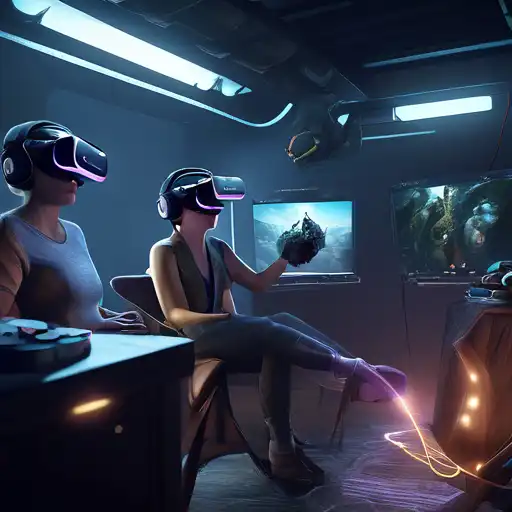Introduction to Virtual Reality
Virtual Reality (VR) has transformed the way we interact with digital content, offering unparalleled immersive experiences. From gaming to education, VR is reshaping industries by providing users with a sense of presence in a virtual world. This guide will walk you through the essentials of creating engaging VR experiences that captivate and inspire.
Understanding VR Technology
Before diving into VR creation, it's crucial to understand the technology behind it. VR relies on headsets and motion tracking to simulate a three-dimensional environment. Key components include the display, lenses, and input systems, which work together to create a seamless virtual experience.
Choosing the Right Hardware
Selecting the appropriate hardware is the first step in VR development. Options range from high-end headsets like the Oculus Rift and HTC Vive to more accessible mobile VR solutions like Google Cardboard. Consider your target audience and the complexity of your project when choosing hardware.
Designing for VR
Designing for VR requires a different approach than traditional digital design. Here are some key considerations:
- User Comfort: Avoid designs that cause motion sickness or discomfort.
- Interactive Elements: Incorporate interactive elements to enhance engagement.
- Navigation: Design intuitive navigation to help users move through the virtual space.
Creating Immersive Content
Content is king in VR. High-quality, immersive content can make or break the user experience. Focus on realistic graphics, spatial audio, and interactive storytelling to create a compelling virtual world.
Development Tools and Platforms
Several tools and platforms can streamline the VR development process. Unity and Unreal Engine are popular choices for creating VR content, offering robust features and community support. Additionally, platforms like SteamVR and Oculus provide SDKs for developers to build and distribute their VR applications.
Testing and Optimization
Testing is a critical phase in VR development. Ensure your application runs smoothly across different devices and addresses any performance issues. Optimization techniques, such as reducing polygon counts and optimizing textures, can significantly improve the user experience.
Publishing and Marketing Your VR Experience
Once your VR experience is ready, it's time to share it with the world. Platforms like Oculus Store and SteamVR offer opportunities to publish and monetize your VR applications. Effective marketing strategies, including social media promotion and influencer partnerships, can help attract users to your VR experience.
Future Trends in VR
The future of VR is bright, with advancements in haptic feedback, eye-tracking, and wireless technology paving the way for even more immersive experiences. Staying updated with these trends can help you create cutting-edge VR content.
Creating immersive VR experiences is a challenging yet rewarding endeavor. By understanding the technology, designing with the user in mind, and leveraging the right tools, you can craft virtual worlds that captivate and inspire. Whether you're a seasoned developer or a newcomer to VR, this guide provides the foundation you need to succeed in the exciting world of virtual reality.
